AMERICAN REEF COALITION

American Reef Coalition honored with Trilogy Blue Aina award.
Recognized and awarded for our marine debris programs on the island of Lana'i. Over 100 volunteers from Maui sailed over to Lana'i for an underwater clean up, a harbor clean up and presentation by ARC's Captain Terry.
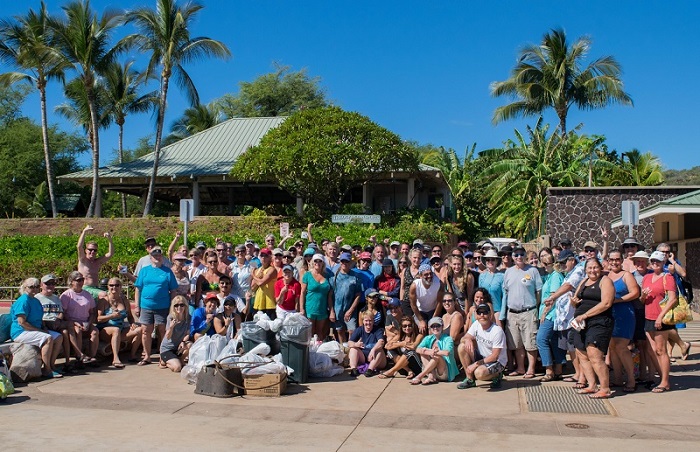
Japanese Tsunami Debris is hitting the islands.
We perform marine debris assessments and removal on these remote beaches and are now scheduling additional trips. Want to help? http://www.americanreef.org/membership.html
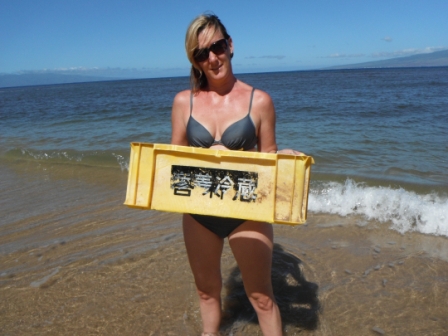 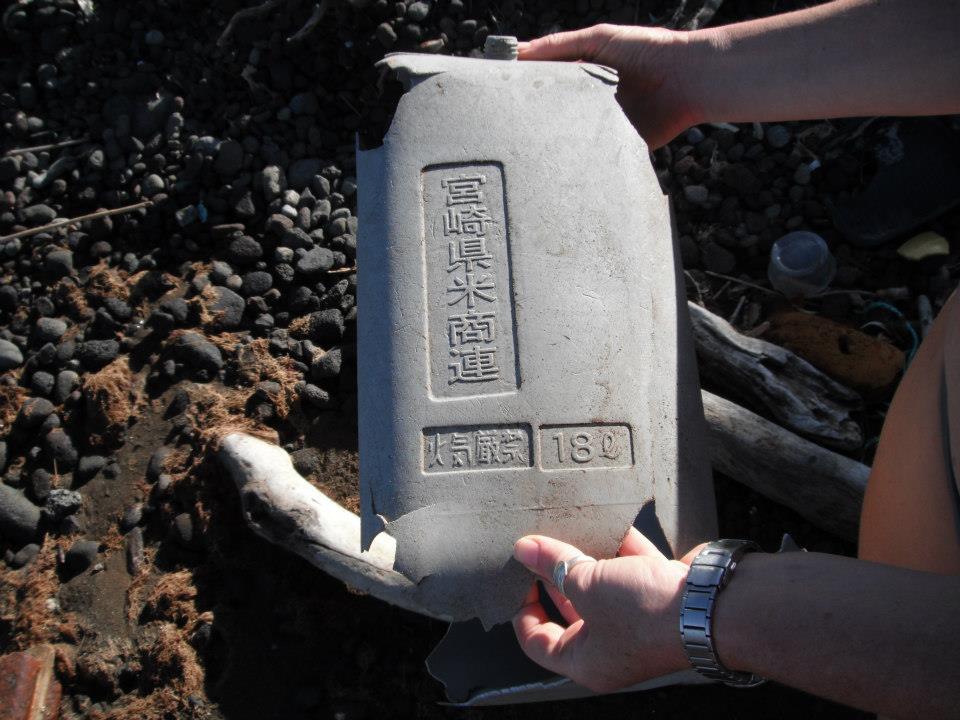
--------------------------------------------------------------
ARC crew pulls over 750 pounds of concrete blocks off South Maui's coral reefs. Unscrupulous fishermen are beginning to use concrete blocks to anchor their "slide-bait". Slide bait fishing has been around for a long time using a specialized fishing weight, which does much less harm to the reef. To save on the cost of the fishing weights, some fisherman have turned to using left over concrete blocks. This form of fishing is illegal in Hawaii.
 

---------------------------------------------------------------
We do more than rescue declining ecosystems...
After a full day of repairing environmental moorings inside the Molokini Marine Reserve we rescue a couple of kayakers in distress. The two girls bookended by ARC crewmembers Mark and Tree, were over a mile offshore desperatley hanging on to their overturned kayak in rough waters. Shortly after the rescue, an emergency call was heard over our marine radio announcing the girls as missing. We contacted the Coast Guard and brought the girls safely back to shore.
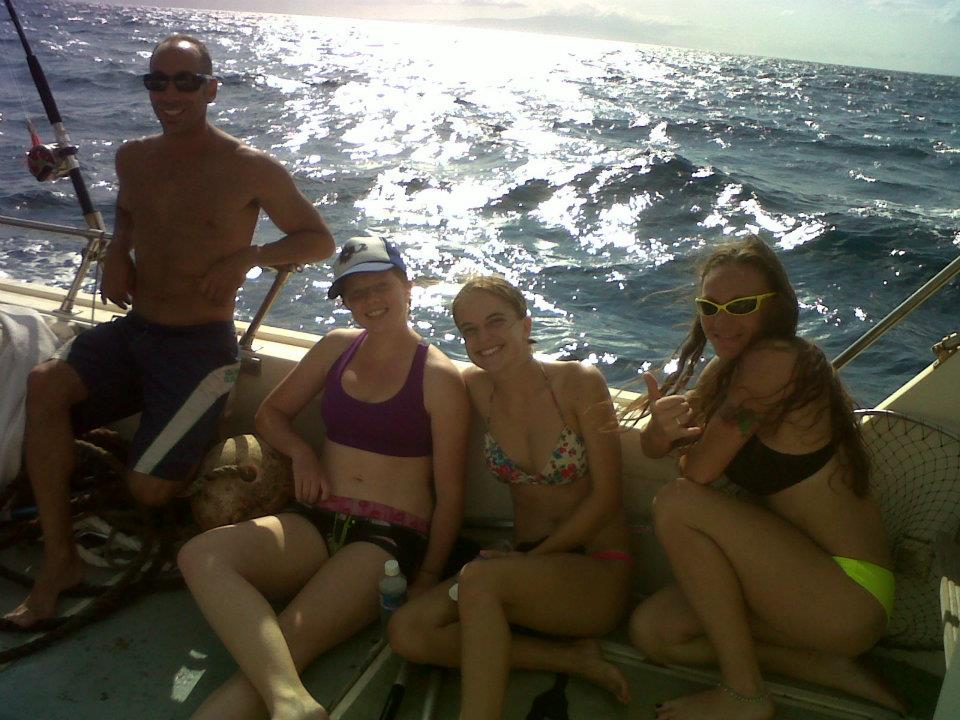
-----------------------------------------------------------------

West Marine, the worlds largest boating supplies retailer has chosen the American Reef Coalition to be their sponsored nonprofit for the Grand Opening "Cruising for a Cause" celebration at their new Honolulu store.
------------------------------------------------------------------
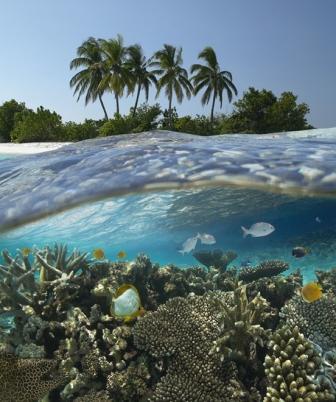
Come to Maui and help us save the planet, one endangered ecosystem at a time. Click HERE for more information.
----------------------------------------------------------------
Our First Public Service Announcement Video! Click HERE and check it out!
-----------------------------------------------------------------
And now for something completely different... The progressive thinking mammals that we be, decided to take off the flippers and venture onto land, at-least a few days out of the year. The American Reef Coalition has added wilderness conservation to our purpose.
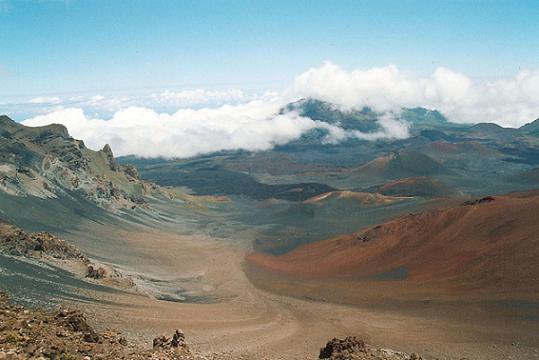
Haleakala National Park Wilderness area, Maui. The largest dormant volcano in the world. Also supporting the most endangered species of any National Park in America.
-------------------------------------------------------------------
The Hawaiian Monk Seal. The most endangered pinniped in the Americas.
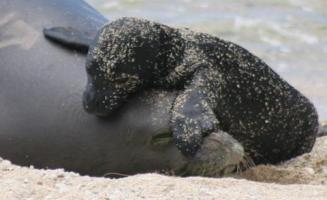
We participate in the semi-annual NOAA sponsored Hawaiian Monk Seal count. Sad to say there were barely 30 spotted among the main Hawaiian Islands. Possibly only 1,100 left in the wild. Making the Hawaiian Monk Seal the most endangered seal species in the Americas. The Marine Mammal Center based out of California is trying to open a rescue center here in Hawaii to help our monk seal pups make it through their first 3 years of life. If they can make it past 3 years, their survival rate goes from 20% to 70%. We helped the Marine Mammal Center to raise funds for the rescue center in a fundraiser here on Maui. If you would like to help, check out their website:

------------------------------------------------------------------
CORAL AS AN ENDANGERED SPECIES
Four years ago, two species of Acropora corals (Elkhorn and Staghorn Coral) were listed by the United States as Vulnerable under the Endangered Species Act. Today, just four years later, the National Marine Fisheries Service is now considering the inclusion of 82 additional coral species to that list. Various studies have concluded that human-caused conditions, even under the most conservative projections, will cause damage to 80% of the world's coral reefs by the year 2030. Most of this damage will be to the point that the reef will not fully recover.
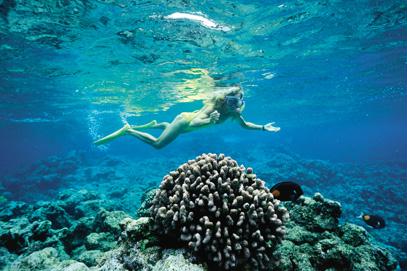 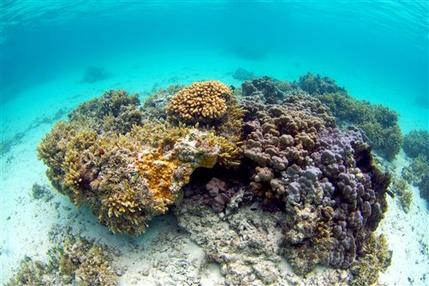
-----------------------------------------------------------------
MARINE DEBRIS & ENTANGLEMENTS
Since 2002 there have been 39 confirmed reports of Humpback whale entanglements in Hawaiian waters. Toward the end of the 2009-2010 whale season in Hawaii, a young whale was spotted in the channel between Maui and Molokai with approximately 500 feet of polypropylene rope trailing behind it. The rope was wrapped thru the whales mouth and around it's head near the blow hole. After several attempts, the rope was removed by a NOAA disentanglement team. In the pictures below, you can see the rope wrapped around and trailing behind the whale. The NOAA disentanglement team used a knife on the end of a long pole to cut the rope. It has been estimated that over 300,000 cetaceans (whales and dolphins) die each year worldwide as a result of entanglements. To report a whale in distress, call 1-888-256-9840.
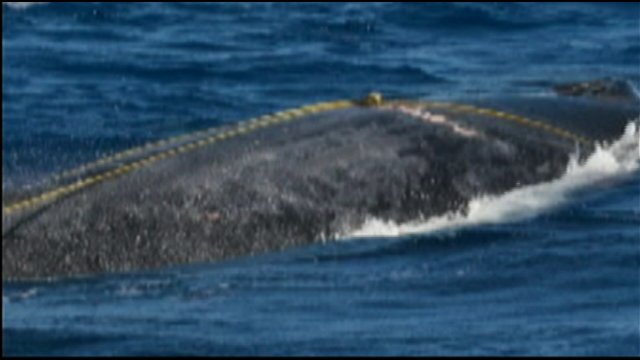 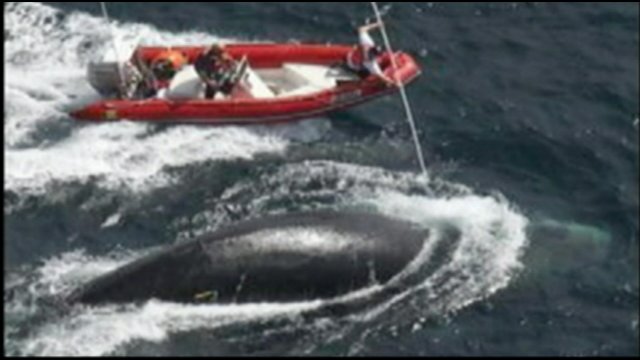
Every year we remove tons of debris from our small area of the Pacific. We try to cover 1,000 square miles of ocean surrounding the islands of Maui, Lanai, Molokai, Kahoolawe and Molokini. We also perform beach clean-ups. With the fact that globally, marine debris is responsible for the deaths of 1,000 marine animals a day, it makes marine debris eradication one of the best programs in marine conservation. The picture to the below right is after we retrieved a long liner fishing buoy and rope. Look at the picture to the below left. Look familiar?
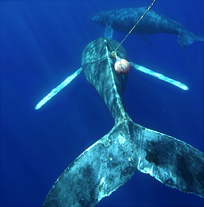 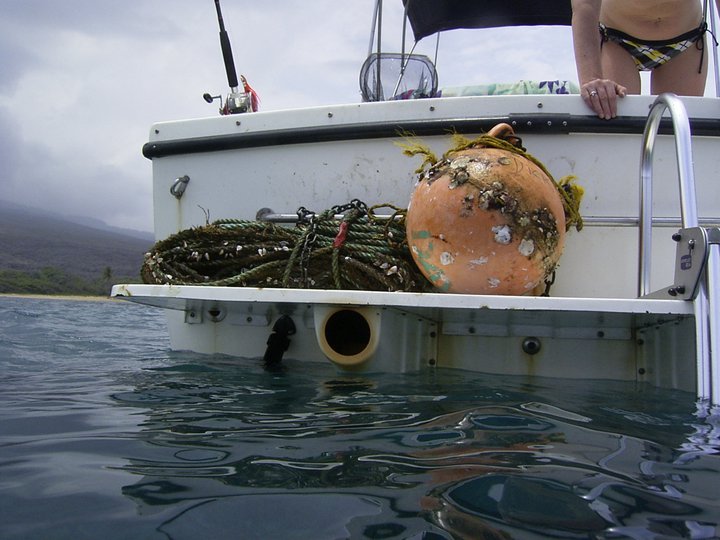
Look at the picture below left. A whale entangled in a mass of net an rope. The picture on the right look familiar? A ton of abandoned fishing net and rope that we retrieved from the ocean in Hawaiian Humpback Whale breeding grounds during breeding season.
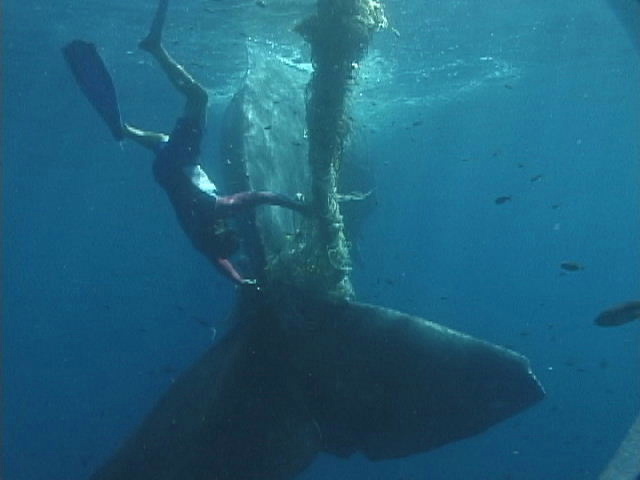 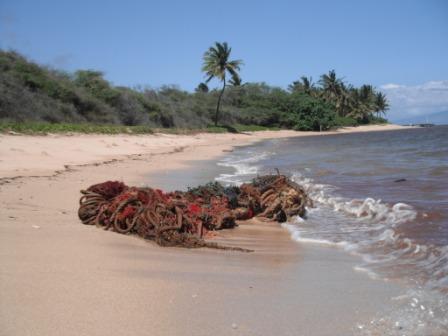
------------------------------------------------------------------
CORAL REEF MONITORING - ISLAND OF MAUI
We have our 18 permanent transect pins installed with the help of the Hawaii Division of Aquatic Resources (DAR). We received our scientific permits to install the pins to mark 3 long-term monitoring sites. The sites are all located along Maui's south shore; starting on a reef nearly devastated by invasive algae and going 4 miles south to a site in comparatively healthy coral reef.
Our rationale for selecting these particular sites for monitoring is 2-fold: First, we are filling in gaps in DAR monitoring. Maui DAR personnel are among the best marine biologists and marine naturalist in the state. However, without help from nonprofits like the American Reef Coalition, gaps in monitoring and certain DAR missions are not accomplished or have to be postponed. It's always the same problem...just not enough money in the state budget.
Second, The northern most section of the monitoring area is choked with invasive algae. The next site is 3 miles south and downstream. This reef is in relatively good condition considering the amount of daily human interaction. The last site is 1 mile further south. This is another relatively healthy reef. This is not to say the same invasive algae that devastated the northern most sections is not present in the southern sections. It is. The prevailing current moves from north to south in this 4 mile stretch. Assuming whatever is upstream will eventually go downstream, monitoring these particular sites will, in theory, provide an early warning system for the southernmost sections of the island's reefs.
The invasive algal situation in the northern most sections of the south coast reef system cost the state an estimated $20 million a year in clean-up, lost revenue and devalued real estate. The reasons for the bloom have been blamed on nutrient loading thru run off from agriculture, development, storm drains and seepage from the water treatment plant injection wells. Had there been an ongoing upstream - downstream monitoring system on the reefs prior to the algal bloom, perhaps it could have been seen, stopped or the impact reduced prior to destroying coral reefs and becoming a burden to the state, businesses and other residents of Maui.
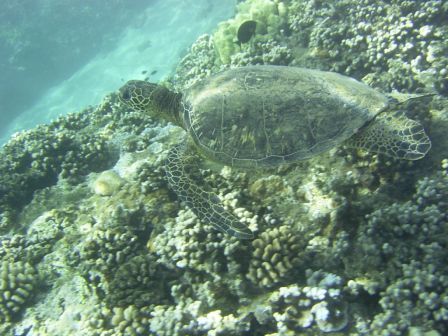 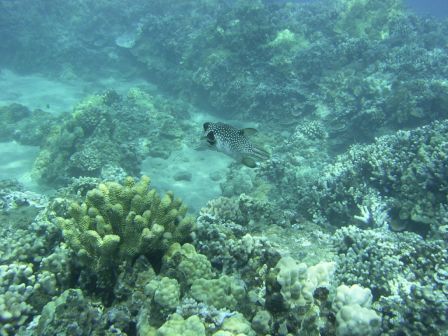
-----------------------------------------------------------------
ISLAND OF LANAI
By comparison, the coral reefs off Lanai are in substantially better condition than South Maui. Some of the coral reef here is absolutely breathtaking. There are many reasons for this; less people and less development can mean cleaner water. Fewer people mean fewer fishermen, which allow for more herbivorous fish to keep algae in check and therefore a better balanced ecosystem. With that said, Lanai's coral reefs are not without problems. The shallow reefs are showing signs of coral bleaching. Blamed on global warming, the warmer water kills the algae which has a symbiotic relationship with the coral polyps. In July of 2008 while surveying a reef off East Lanai, we discovered the largest bloom of Neomeris Annulata (algae) ever recorded in the state of Hawaii. Strange days indeed. These events need to be discovered, reported and monitored to better understand the effect, research the cause and devise a remedy. Working in cooperation with the Maui office of the Hawaii Division of Aquatic Resources, an Ulva cage has been set in the area.
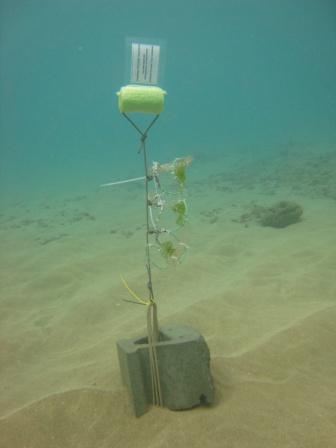
Ulva Cage
Ulva is an algae also known as sea lettuce. The Ulva will uptake nutrients in the area and later when analyzed will tell us what additional nutrients are in the area that could have stimulated the sudden growth of Neomeris Annulata.
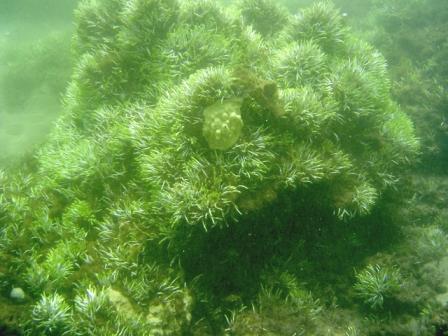
Neomeris Annulata algae
Take a look at the algae picture above, it had covered the reef like a thick shag carpet. The bloom was all in shallow water generally less than 15 feet.
------------------------------------------------------------------
ISLAND OF MOLOKINI
Located 3 miles off Maui's south shore in a channel between the islands of Maui and Kahoolawe, Molokini is a crescent shaped islet of only 24 acres above water. Ranked as one of the top dive destinations in the world, this amazing caldera sees over a thousand SCUBA divers and snorkelers every day. And yet, even with all the daily human interaction, Molokini's coral reefs are still in pristine condition. As part of our mission, the American Reef Coalition helps government agencies and other nonprofits involved in marine conservation. We were recently called on to aid the Hawaii Division of Aquatic Resources perform their latest fish and coral survey at Molokini. Having 45% of all the legally installed day-use moorings for all of Maui Nui, we visit Molokini quite often to assess and maintain these moorings. While there, we are always watching for any changes in the health of the ecosystem.
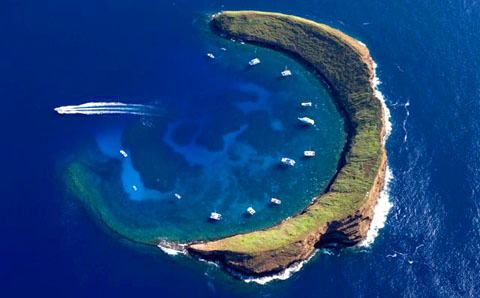 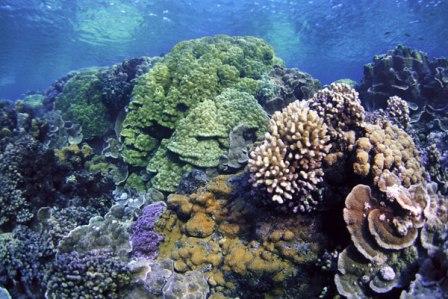
--------------------------------------------------------------------
RESEARCH
We finally received our scientific permits to transplant coral. The coral will come from growth on day-use mooring buoys and lines. During routine maintenance and replacement, these corals in the past have ended up in dumpsters along with the old buoy. It just seems silly to throw an endangered species into a dumpster. We are now able to remove these corals and transplant onto barren areas of reef or artificial reef and study their growth and new colonization of coral reef critters.
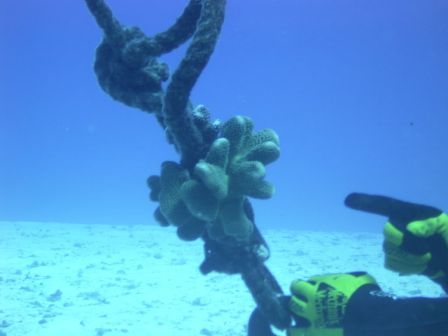 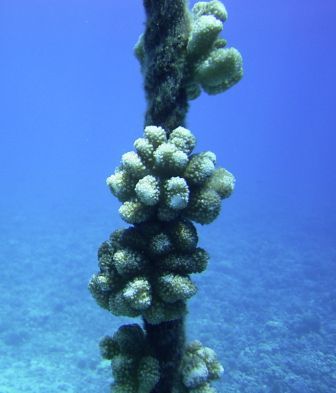
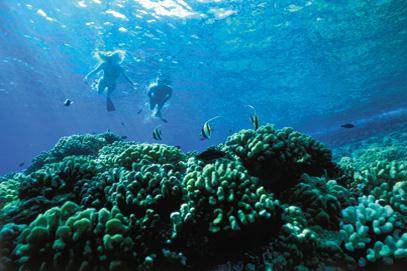 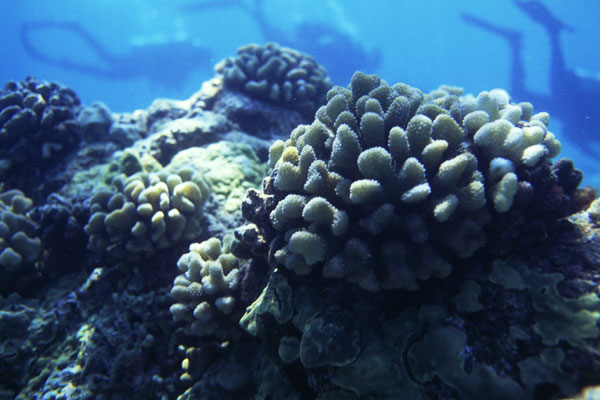
--------------------------------------------------------------------
ARTIFICIAL REEFS
The American Reef Coalition provided boat and dive support to American Marine and the Hawaii Division of Aquatic Resources for the latest addition to the Keawakapu Artificial Reef off South Maui. This deployment of 1,500 modules adds to the existing artificial reef. Keawakapu Artificial Reef was created in 1962 and stretches across approximately 52 acres. It includes about 150 cars, 2,250 tire modules, 35 concrete slabs, and one vessel, the "St. Anthony." The modules were deployed at a depth of 75 feet. Each "Z"-shaped module measures eight feet long by four feet wide, with 12-inch legs at each end facing in opposite directions, and weighs about 2,200 pounds. New coral and algae will grow on the forms, which will provide additional habitat to new communities of reef fish, become an additional SCUBA diving destination and help de-stress our natural reefs. We will use the new modules as a classroom for studying coral reef colonization.
Fully loaded barge just prior to deployment. American Reef Coalition boat in foreground.

First to dive the new reef
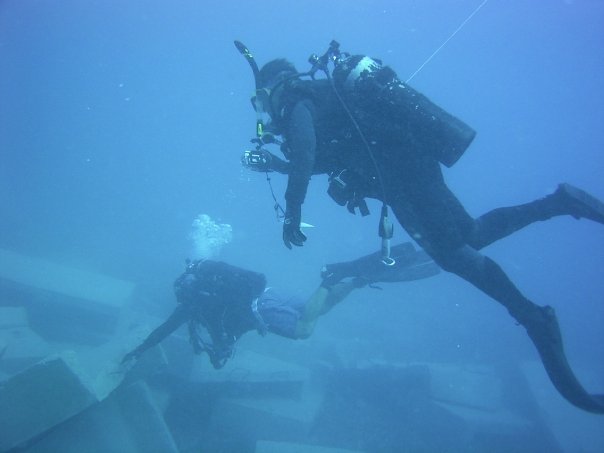 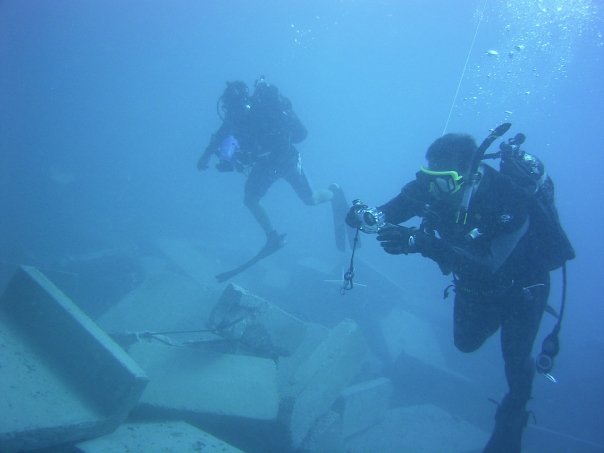
-----------------------------------------------------------------
ENVIRONMENTAL MOORINGS
Day-Use Moorings are perhaps the quickest, easiest and most cost effective ways to protect living coral reefs in popular SCUBA and snorkeling destinations. The American Reef Coalition has been involved in the permitting and installation process of new day-use moorings since 2002. We assess and maintain Maui, Lanai and Molokini moorings in cooperation with other concerned non-profits and commercial operators. Combined, these day-use moorings protect up to 118 acres of living coral from being ripped apart by anchors.
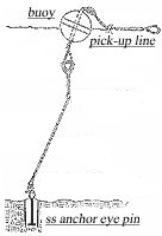 
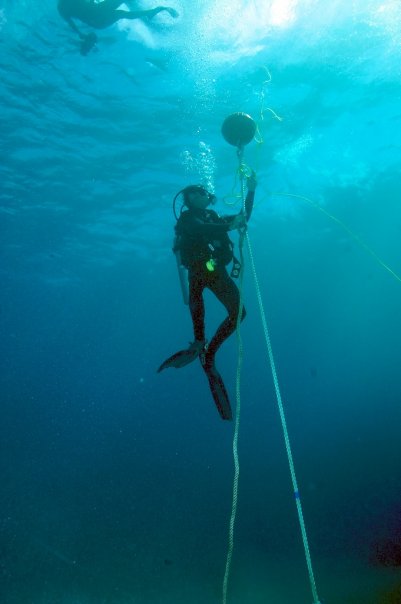
|